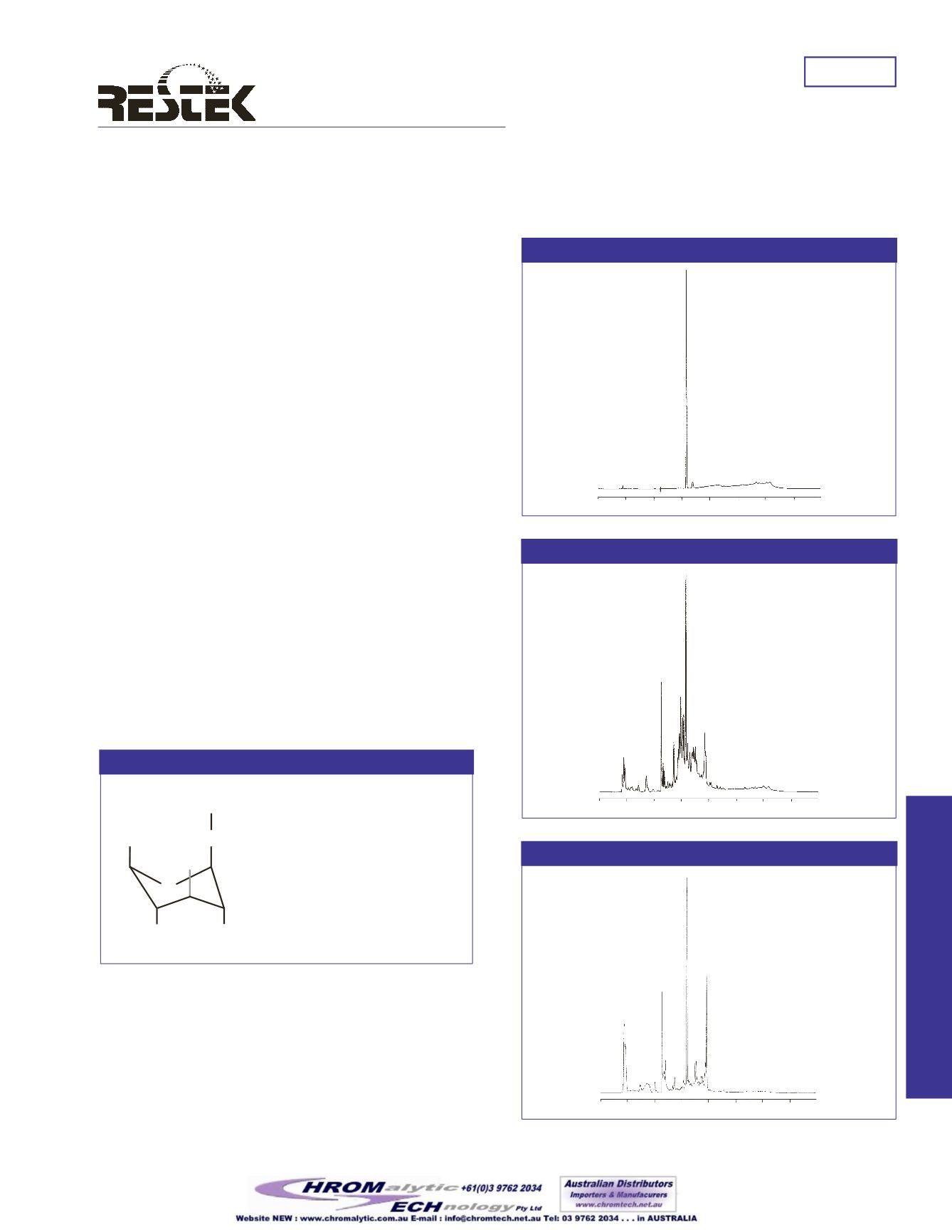
OH S
OH
Glucosinolates are a naturally occurring set of compounds
found in a variety of edible plants, most notably in broccoli,
radish, and cabbage.Agriculturally, the degradation compounds
of glucosin-olates have been shown to act as natural pesticides
and fungicides (this breakdown occurs in the soil). These toxic
compounds then further degrade into harmless compounds.
Research on glucosinolates is continuing in hopes of bringing a
more environmentally friendly approach to pest control.
Nutritionally, human consumption of these compounds is associ-
atedwith a significantly reduced risk for a variety ofmalignant
cancers along the alimentary canal. They also have been shown
to suppress existing tumor growth. Glucosinolates are precursors
to isothiocyanates, such as sulforaphane (4-methylsulfinylbutyl
isothiocyanate), which regulatesmammalian enzymes of xeno-
bioticmetabolism.
Phenethyl glucosinolate (gluconasturtiin) is one of the glucosino-
lateswidely found in cruciferous vegetables. It is one of the least
polar glucosinolates, making it relatively easy to retain by reverse
phase high performance liquid chromatography (HPLC).
However, there are a number of glucosinolateswith hydrophilic
"R-" groups, such as 3-methylsulfinylpropyl glucosinolate, that
are very difficult to retain by conventional reverse phaseHPLC.
Additionally, the "R-" group of glucosinolates can vary greatly,
resulting in a large number of glucosinolateswithwidely differing
polarities (
Figure 1
). Thusmany analysts resort to reverse phase
ion-pairingmethods to analyze glucosinolates. The addition of
ion-pairing reagents is less convenient, andmakes the analyses
inherently less reproducible. Ion-pairing reagents alsomake gradi-
ent elution very impractical, due to long equilibration times.
HPLC
Applications
note
Restek Corporation • (800) 356-1688 • (814) 353-1300 •
#59335
HPLC
HPLCAnalysisof Glucosinolates inVegetableExtractswithout IonPairing
Using anUltraAqueousC18Column.
Figure 1
R—C=N—O—SO
3
O
OH OH
The analysis of a phenethyl glucosinolate standard using anUltra
Aqueous C18 column shows good peak shapewithout the use of
ion-pairing reagents (
Figure 2
). Extracts of cabbage andwater-
cresswere analyzed using the same conditions (
Figures 3 and 4).
Gradient elution from 0 to 75% acetonitrilewas used to retain
and elute analytes having awide range of polarities. TheUltra
Aqueous C18 column allows the use of simple reverse phase con-
ditions for the analyses of glucosinolates, saving time as com-
pared to reverse phase ion-pairingmethods.
Figure 2:
Phenethyl Glucosinolate onUltra Aqueous C18
Glucosinolates:
ß-thioglucoside
N-hydroxysulfates
Figure 4:
Watercress Extract onUltra Aqueous C18
Figure 3:
Cabbage Extract onUltra Aqueous C18
Peak List:
1. phenethyl glucosinolate
Sample:
potassium phenethyl
glucosinolate standard
Inj.:
10µL
Conc.:
1000µg/mL
Solvent:
water
Column:
UltraAqueousC18
Catalog#:
9178565
Dimensions: 150 x 4.6mm
Particle size: 5µm
Pore size:
100Å
Conditions:
Mobile phase: A: 50mM potassium
phosphate, pH 2.5
B: acetonitrile
Time (min.) %B
0.0 0
10 75
11 0
16
0
Flow:
1.0mL/min.
Temp.:
ambient
Detector:
UV@ 210nm
0 2 4 6 8 10 12 14min.
1
0 2 4 6 8 10 12 14min.
0 2 4 6 8 10 12 14min.
1
1
Peak List:
1. phenethyl glucosinolate
Sample:
cabbage extract
Inj.:
20µL
Solvent:
water
LC_0165
Peak List:
1. phenethyl glucosinolate
Sample:
watercress extract
Inj.:
100µL
Solvent:
water
LC_0166
LC_0167
Column:
UltraAqueousC18
Catalog#:
9178565
Dimensions: 150 x 4.6mm
Particle size: 5µm
Pore size:
100Å
Conditions:
Mobile phase: A: 50mM potassium
phosphate, pH 2.5
B: acetonitrile
Time (min.) %B
0.0 0
10 75
11 0
16
0
Flow:
1.0mL/min.
Temp.:
ambient
Detector:
UV@ 210nm
Column:
UltraAqueousC18
Catalog#:
9178565
Dimensions: 150 x 4.6mm
Particle size: 5µm
Pore size:
100Å
Conditions:
Mobile phase: A: 50mM potassium
phosphate, pH 2.5
B: acetonitrile
Time (min.) %B
0.0 0
10 75
11 0
16
0
Flow:
1.0mL/min.
Temp.:
ambient
Detector:
UV@ 210nm


